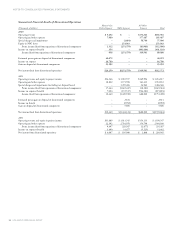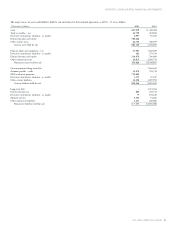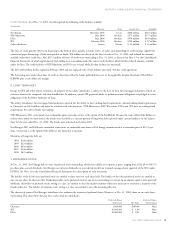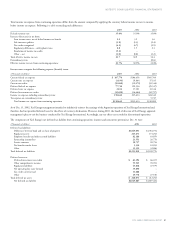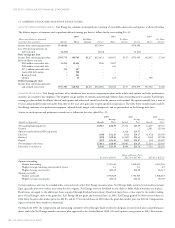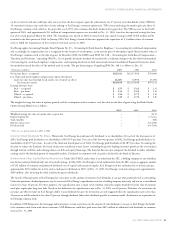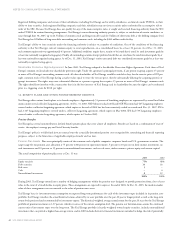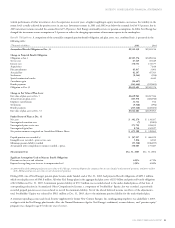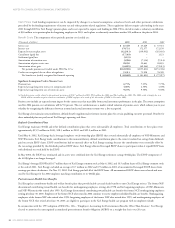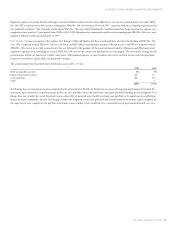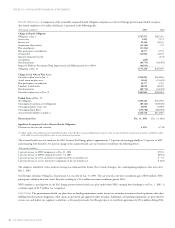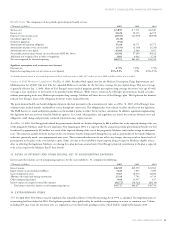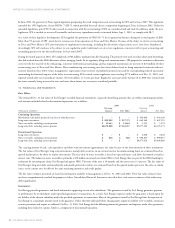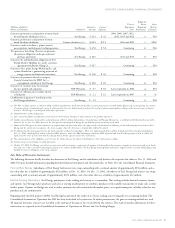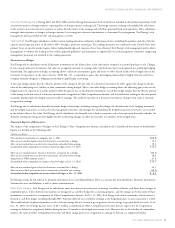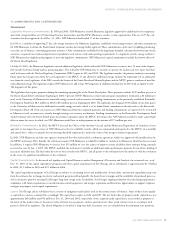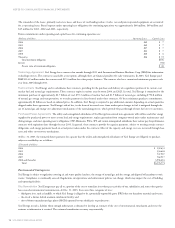Xcel Energy 2003 Annual Report Download - page 50
Download and view the complete annual report
Please find page 50 of the 2003 Xcel Energy annual report below. You can navigate through the pages in the report by either clicking on the pages listed below, or by using the keyword search tool below to find specific information within the annual report.
66 XCEL ENERGY 2003 ANNUAL REPORT
NOTES TO CONSOLIDATED FINANCIAL STATEMENTS
Cash Flows Cash funding requirements can be impacted by changes to actuarial assumptions, actual asset levels and other pertinent calculations
prescribed by the funding requirements of income tax and other pension-related regulations. These regulations did not require cash funding in the years
2001 through 2003 for Xcel Energy’s pension plans, and is not expected to require cash funding in 2004. PSCo elected to make a voluntary contribution
of $30 million to its pension plan for bargaining employees in 2003, and it plans to voluntarily contribute another $10 million to the plan in 2004.
Benefit Costs The components of net periodic pension cost (credit) are:
(Thousands of dollars) 2003 2002 2001
Service cost $ 67,449 $ 65,649 $ 57,521
Interest cost 170,731 172,377 172,159
Expected return on plan assets (322,011) (339,932) (325,635)
Curtailment (gain) loss (17,363) – 1,121
Settlement (gain) loss (1,135) ––
Amortization of transition asset (1,996) (7,314) (7,314)
Amortization of prior service cost 28,230 22,663 20,835
Amortization of net gain (44,825) (69,264) (72,413)
Net periodic pension cost (credit) under SFAS No. 87(a) $(120,920) $(155,821) $(153,726)
Credits not recognized due to effects of regulation 51,311 71,928 76,509
Net benefit cost (credit) recognized for financial reporting $ (69,609) $ (83,893) $ (77,217)
Significant Assumptions Used to Measure Costs
Discount rate 6.75% 7.25% 7.75%
Expected average long-term increase in compensation level 4.00% 4.50% 4.50%
Expected average long-term rate of return on assets 9.25% 9.50% 9.50%
(a) Includes pension credits related to discontinued operations of $18.7 million for 2003, $9.6 million for 2002, and $8.2 million for 2001. The 2003 credit is largely due to a
$20.0 million curtailment gain related to termination of NRG employees as a result of the divestiture of NRG in December 2003.
Pension costs include an expected return impact for the current year that may differ from actual investment performance in the plan. The return assumption
used for 2004 pension cost calculations will be 9.0 percent. The cost calculation uses a market-related valuation of pension assets, which reduces year-to-year
volatility by recognizing the differences between assumed and actual investment returns over a five-year period.
Xcel Energy also maintains noncontributory, defined-benefit supplemental-retirement-income plans for certain qualifying executive personnel. Benefits for
these unfunded plans are paid out of Xcel Energy’s operating cash flows.
Defined Contribution Plans
Xcel Energy maintains 401(k) and other defined contribution plans that cover substantially all employees. Total contributions to these plans were
approximately $15.9 million in 2003, $18.3 million in 2002, and $29.0 million in 2001.
Until May 6, 2002, Xcel Energy had a leveraged employee stock ownership plan (ESOP) that covered substantially all employees of NSP-Minnesota and
NSP-Wisconsin. Xcel Energy made contributions to this noncontributory, defined contribution plan to the extent it realized tax savings from dividends
paid on certain ESOP shares. ESOP contributions had no material effect on Xcel Energy earnings because the contributions were essentially offset by
the tax savings provided by the dividends paid on ESOP shares. Xcel Energy allocated leveraged ESOP shares to participants when it repaid ESOP loans
with dividends on stock held by the ESOP.
In May 2002, the ESOP was terminated and its assets were combined into the Xcel Energy retirement savings 401(k) plan. The ESOP component of
the 401(k) plan is no longer leveraged.
Xcel Energy’s leveraged ESOP held 10.7 million shares of Xcel Energy common stock at May 6, 2002, and 10.5 million shares of Xcel Energy common stock
at the end of 2001. Xcel Energy excluded an average of 0.7 million in 2002 and 0.9 million in 2001 of uncommitted leveraged ESOP shares from
earnings-per-share calculations. On Nov. 19, 2002, Xcel Energy paid off all of the ESOP loans. All uncommitted ESOP shares were released and were
used by Xcel Energy for the 2002 employer matching contribution to its 401(k) plan.
Postretirement Health Care Benefits
Xcel Energy has contributory health and welfare benefit plans that provide health care and death benefits to most Xcel Energy retirees. The former NSP
discontinued contributing toward health care benefits for nonbargaining employees retiring after 1998 and for bargaining employees of NSP-Minnesota
and NSP-Wisconsin who retired after 1999. Xcel Energy discontinued contributing toward health care benefits for former NCE nonbargaining employees
retiring after June 30, 2003. Employees of the former NCE who retired in 2002 continue to receive employer-subsidized health care benefits. Nonbargaining
employees of the former NSP who retired after 1998; bargaining employees of the former NSP who retired after 1999; and nonbargaining employees of
the former NCE who retired after June 30, 2003, are eligible to participate in the Xcel Energy health care program with no employer subsidy.
In conjunction with the 1993 adoption of SFAS No. 106 – “Employers’ Accounting for Postretirement Benefits Other Than Pension,” Xcel Energy
elected to amortize the unrecognized accumulated postretirement benefit obligation (APBO) on a straight-line basis over 20 years.


